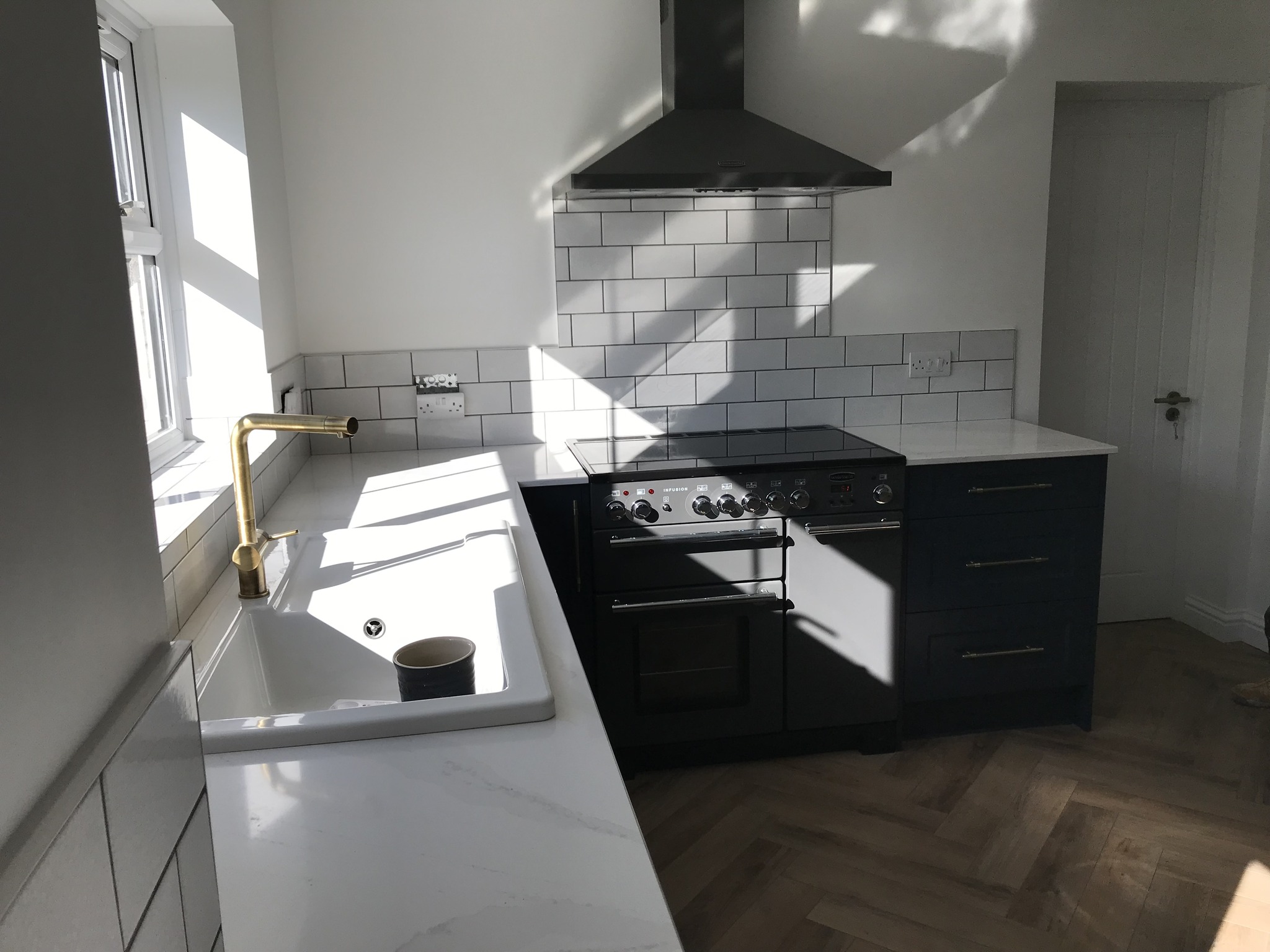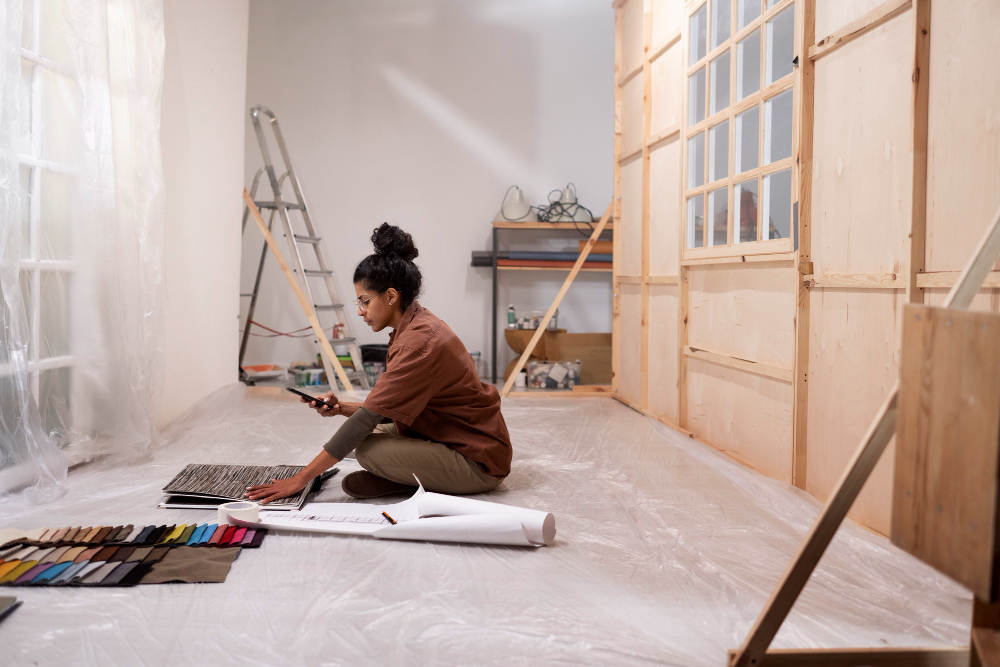Best Times & Methods for Exterior Painting in the UK
Insights into the Best Times and Methods for Painting Exterior Surfaces in the UK Climate
Painting the exterior of your home is a rewarding project, but it comes with unique challenges, especially in the ever-changing UK climate. Choosing the right time and methods can make all the difference between a flawless, long-lasting finish and a peeling, weathered mess. In this guide, we’ll explore the ideal seasons for exterior painting and share techniques to avoid common mistakes.
Why Timing Matters for Exterior Painting in the UK
The UK weather is notoriously unpredictable, making timing crucial for exterior painting projects. Too much rain or cold can hinder the paint’s ability to adhere properly, while excessive heat can cause it to dry unevenly. Striking the right balance is essential for achieving a durable and professional finish.
Best Seasons for Exterior Painting
- Spring (Late March to May): Temperatures begin to stabilise, and rain is less frequent, making it an excellent time to start painting projects. Avoid frosty mornings or damp evenings, as they can impact drying.
- Summer (June to August): The warm, dry weather of summer is ideal for exterior painting. However, avoid painting in direct sunlight during heatwaves, as this can lead to blistering. Early mornings or late afternoons are better times to work.
- Early Autumn (September to Mid-October): With milder temperatures and reduced rainfall, early autumn offers another window for painting. Be cautious, as unpredictable weather can still occur.
Seasons to Avoid
- Winter: Cold temperatures and increased moisture can lead to cracking and peeling. Most exterior paints are not designed to cure effectively below 10°C.
- Rainy Periods: Even the most durable exterior paints require a dry surface to adhere properly, so avoid rainy days or overly humid conditions.
Preparation: The Key to a Successful Paint Job
Before even picking up a brush, proper preparation is essential. The UK climate, with its frequent rain and dampness, can make exterior surfaces prone to mould, mildew, and flaking.
Steps for Preparing Exterior Surfaces
- Clean Thoroughly: Use a pressure washer or a scrub brush to remove dirt, grime, and loose paint. Allow the surface to dry completely before moving forward.
- Repair Damages: Fill in cracks, holes, or other imperfections with an exterior-grade filler. Sand down any rough areas for a smooth base.
- Treat Mould and Mildew: Apply a mould-killing solution to areas affected by dampness, ensuring that the spores are completely eradicated.
- Prime Properly: Use a high-quality primer suited for exterior surfaces to ensure better paint adhesion and protection against moisture.
Choosing the Right Paint and Tools for UK Homes
For exterior painting in the UK, it’s important to select paints and materials designed to withstand harsh weather conditions.
- Weatherproof Paints: Look for paints labelled as weather-resistant or specially formulated for exterior use. Acrylic paints are particularly durable and flexible.
- Brushes and Rollers: Use high-quality, weather-resistant brushes or rollers for even application. An extendable roller pole can be handy for reaching high areas.

Avoiding the Most 5 Common Painting Mistakes
Whether it’s an exterior wall or a garden fence, painting mistakes can be costly. Here’s how to avoid them:
1. Painting on a Damp Surface
Moisture can prevent paint from adhering properly. Always check that the surface is dry before starting, especially after rain.
2. Skipping Primer
Primer creates a base for the paint to stick to, particularly on porous or uneven surfaces. Skipping this step can lead to uneven finishes or early peeling.
3. Painting in Extreme Conditions
Avoid painting in direct sunlight, strong winds, or very humid conditions. Each can impact the paint’s drying and curing process.
4. Applying Thick Coats
Applying thick coats in the hope of saving time can lead to drips, uneven textures, and slower drying. Use thin, even coats for the best results.
5. Ignoring Safety Measures
Always use a sturdy ladder and wear protective gear. Secure any loose equipment, especially in windy conditions.
Maintaining Your Exterior Paint Job
Once the paint is applied, proper maintenance is key to longevity. Regularly inspect the surface for signs of wear or damage, and touch up areas as needed. Cleaning the exterior annually can also prevent dirt buildup and keep your home looking fresh.
Painting exterior surfaces in the UK climate requires strategic planning and proper techniques. By choosing the right season, preparing thoroughly, and avoiding common mistakes, you can achieve a stunning and durable finish that withstands the elements. Whether it’s a DIY project or professional job, these insights will help ensure success.
Would you like help finding the right professionals for your exterior painting project? Contact Druston Painting Services for expert advice and high-quality results.















